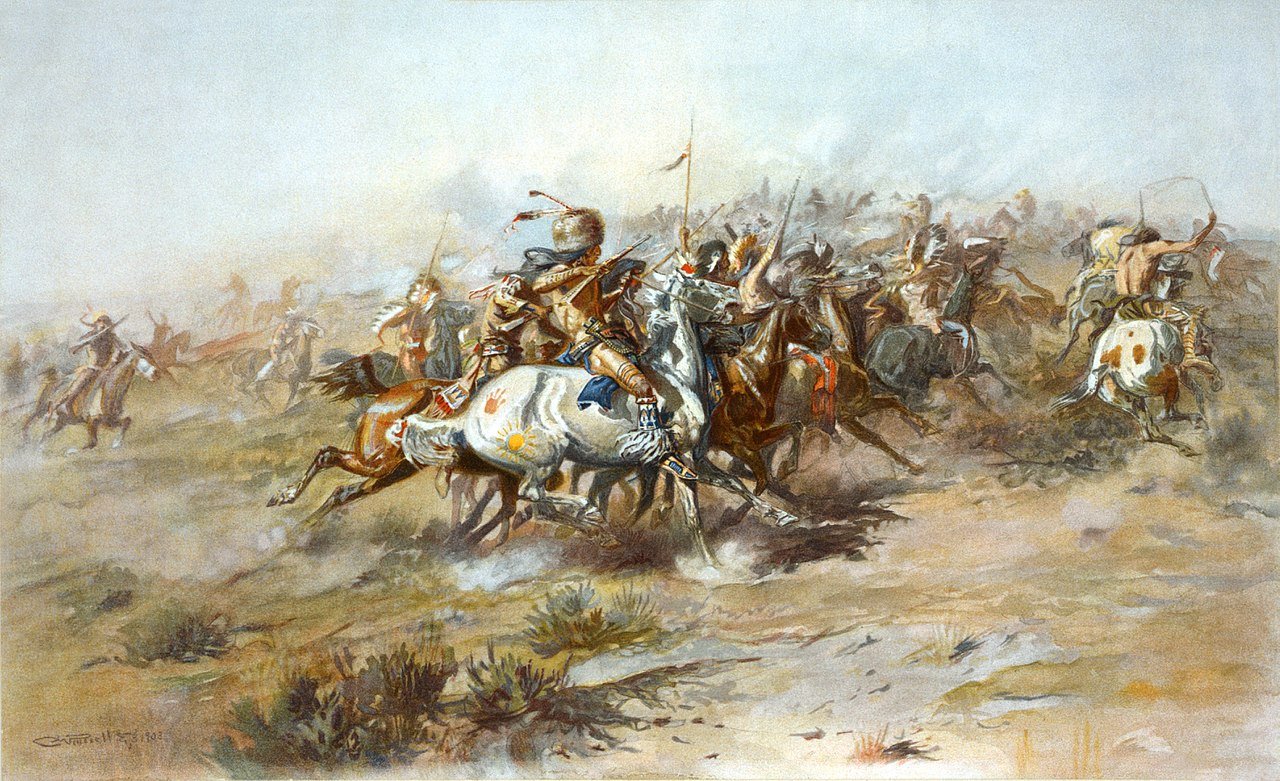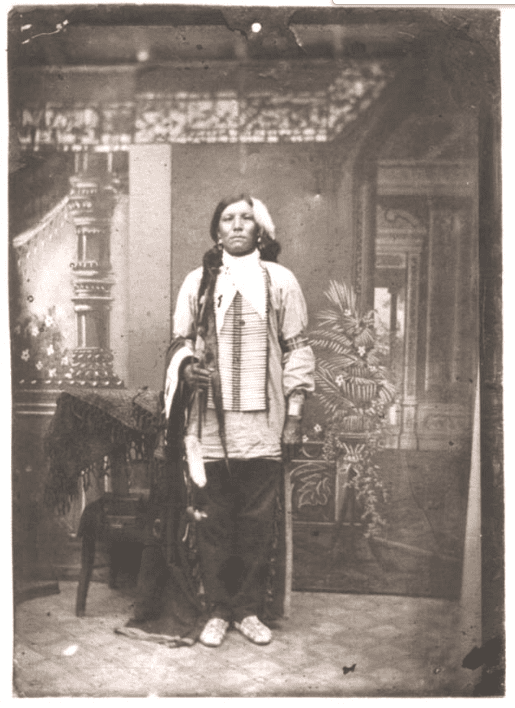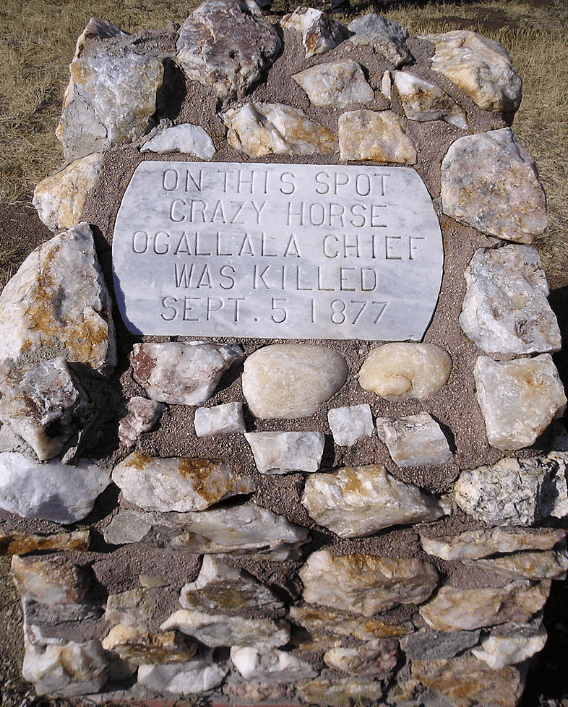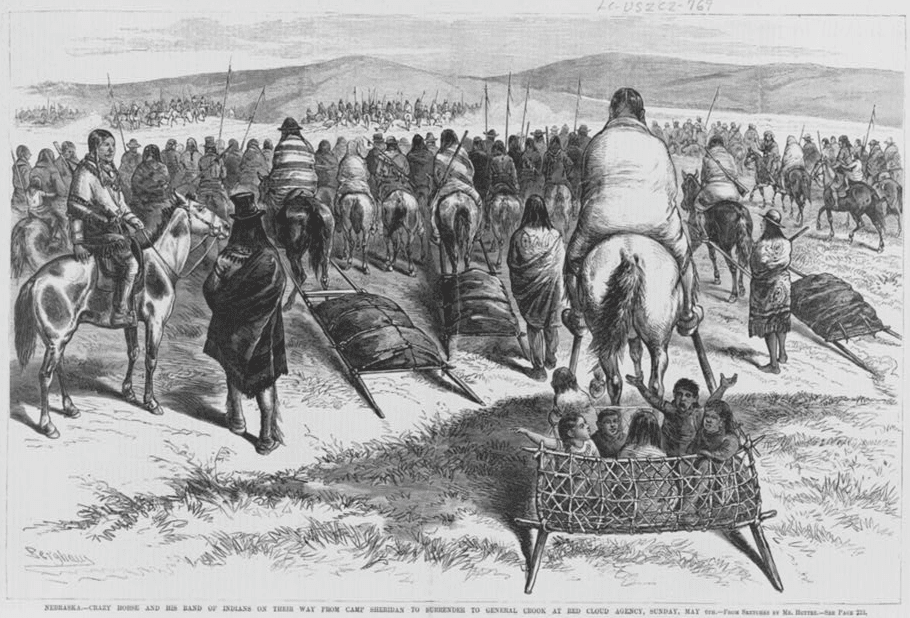Battle of the Little Bighorn (June 25-26, 1876) Battle between a combined Indian force of Lakota Sioux, Northern Cheyenne and Arapaho and the Seventh Cavalry Regiment of the United States Army on the banks of the Little Bighorn River in eastern Montana on June 25 and 26, 1876, resulting in a decisive Indian victory.

The site of the battle that made legendary the Indian chief Crazy Horse, who defeated General Custer and his men, is now part of the Little Bighorn Battlefield National Monument and is located on the east side of the river about five miles south of the Crow Agency settlement.
- The Rally that Paved the Way for Women’s Participation in Modern Life: Women’s Sunday
- Nearly 13,000-Year-Old Ochre Mine Found in America
Crazy Horse, (Lakota: Tȟašúŋke Witkó (b. 1840 – d. September 5, 1877), Siu leader of the Húŋkpathila band of the Oglála Thiyóšpaye branch of the Oglála Lakota. Notable for his victories against whites, Crazy Horse was ambushed and killed by whites in 1877.
Described as a great warrior as well as an important political leader and a philosopher deeply committed to his traditions, Crazy Horse became a symbol of honor and pride for all Indians against the whites.
Crazy Horse was not only the most respected leader of a vast culture in which more than two thousand tribes lived before the Whites set foot on the continent and more than five thousand languages were spoken, but he is also described as a sociologist who respected nature and respected human rights to the fullest.
Life

Although local sources do not give exact information about when Crazy Horse was born, it is estimated that he was born between 1840 and 1845.
Crazy Horse’s birth name is pronounced ‘Cha-O-Ha’ in Lakota, which translates as ‘country’ or ‘among the trees’. In fact, it was a name associated with nature. It is also reported that his mother called him ‘Curly’ or ‘Light Hair’ because of the physical structure of his hair.
Family life
Crazy Horse’s father was a famous warrior known as Lakota Sioux. Some sources report that the Lakota Sioux were called ‘Crazy Horse’ and that this name was passed on to his son because of him. Sources give the birth year of Crazy Horse’s father, Lakota Sioux, as 1810, and the birth year of his mother, called Lakota woman, as 1814.
Personal characteristics
Crazy Horse’s personal qualities also played a major role in making him a respected leader among the Lakotas and other Indians. Described as an extremely hardworking, disciplined man who respected people and nature to the fullest, Crazy Horse is said to have used all the parts of a bison (Tatanga, as he called it) and buried only a small part of it. Crazy Horse is respectfully portrayed as a man who does not hunt more than is absolutely necessary, does not harm trees and plants, and does not pollute the rivers. Although Crazy Horse may appear to be a warrior, on the contrary, he is said to be a leader who is always on the side of peace.
Battle of Little Bighorn
General Custer and his armies, who had bloodied the native tribes of South Dakota and Montana for at least five years, perhaps never imagined that they would face a historic defeat by the Lakota Indians united under the leadership of Crazy Horse.
The battle that made Crazy Horse, who was well trained in battle as a child and adolescent, almost a legend, was fought on June 25, 1876 on the Little Bighorn River plain in Montana. For the first time in history, the Lakota, Nakota, Dakota and Cheyenne Indians united against the white man and defeated General Custer and his men at the Little Bighorn.
While General Custer, two of his brothers and 400 soldiers died in the battle, historians say that this most glorious victory was the beginning of the end for the Indians.
The Battle of the Little Bighorn, depicted by many famous American painters who portrayed Custer as a great hero, has remained in the memory of whites as a reminder of the bitter defeat.

Death
After the heavy defeat at the Battle of Little Bighorn, the whites turned it into a fight for revenge. The policy of deportation that had been initiated earlier was expanded and more indigenous tribes were expelled from their lands, and those who opposed were killed. In particular, many tribes were separated from each other, preventing the natives from uniting. During this expulsion policy, the Lakota chiefs Sitting Bull and Crazy Horse were pursued and killed along with their families at the Battle of Little Bighorn.
For 10 years, Crazy Horse, who started a new uprising called the Ghost Dance and continued his war against the white man and crowned this struggle with the historic Little Bighorn victory, died a bitter end, while the whites, who could not get their ambition, first massacred the Lakotas on December 28, 1890, on the Pine Ridge Indian reservation in a meadow called Wounded Knee, Then they slaughtered Bigfoot, the chief of the Lakotas after Crazy Horse, and nearly 600 Lakota Indians, including women and children, in this meadow. Thus, in a way, the white men took revenge for the Battle of Little Bighorn. However, this counter-struggle went down in history as a war of shame for the whites because of the hundreds of women and children slaughtered.
After the ‘massacre’, the forced migrations that went down in US history as the Trail of Tears began and the Indians were gradually exterminated.

The memorial mountain in his name
The second greatest triumph of the Native Americans over the whites, for whom they had never shown any compassion, was the massive Crazy Horse Mountain Monument, about 4 kilometers from the Mount Rushmore Monument, overlooking the Nevada territory, which has not been completed for years.
In 1947, Standing Bear, a Lakota chief, called for a monument to be built on another mountain about 4 kilometers from Mount Rushmore, at least twice as high as Rushmore and higher than the largest pyramid, Cheops. He approached Korczak Ziolkowski, a Polish immigrant sculptor who had also worked on Rushmore, and Ziolkowski immediately accepted the proposal. Ziolkowski began sculpting a statue of Crazy Horse, the unforgettable chief of the Lakotas, standing on a majestic horse on the surface of the mountain, and continued this process alone with dynamite, compressor diggers and fine workmanship until 1982, when he died. After Ziokolwski’s death, his 10 children inherited the land owned by the Lakotas and tried to finish the statue of Crazy Horse, but the colossal monument remains unfinished to this day.
This incredible sculpture, to which Ziolkowski dedicated himself, shows Crazy Horse pointing with his hand to the Dakota plains. And Crazy Horse says, “The land where I belong is the land where I am buried.” At the foot of the monument-mountain are the words of Chief Red Cloud: “…the white man promised us more things than I can count. He kept only one of them. He said that in the end he would take our land from us. This is the only promise he fulfilled…”
Source: AnaBritannica (1987, volume 6, page: 401-2 Crazy Horse)
